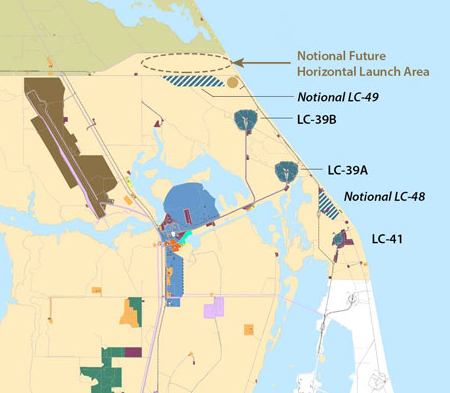Cape Canaveral, version 2.0

Falcon 9 first stage hauled back to the cape after launch
Last week BtB’s intrepid stringer Jay was unable to send me any “Quick Space links” because he was working at Cape Canaveral at the Kennedy Space Center, involved in a project involving, as he noted, “infrastructure,” giving him only a limited access to the center.
He did however have time to drive around and take pictures. For example, we have the picture on the right. On his way to lunch on his second day there he “had to pull over for a semi carrying something large. At first I thought it was a fuel tank, but it was the first stage of a Falcon-9 that lifted off on June 4th.”
This picture alone illustrates how things have changed at Kennedy since the retirement of the shuttle in 2011. Then, local officials and NASA managers all thought the sky was falling in, and that the economy of Cape Canaveral was about to die forever with that retirement.
Instead, it is now entirely routine for a private rocket company to drive its used first stages back and forth in between launches. Cape Canaveral hasn’t died, it has been reborn.
More pictures by Jay are below, all of which illustrate the resurgence of space activity that private enterprise is bringing to America’s first spaceport. To quote Jay,
» Read more

